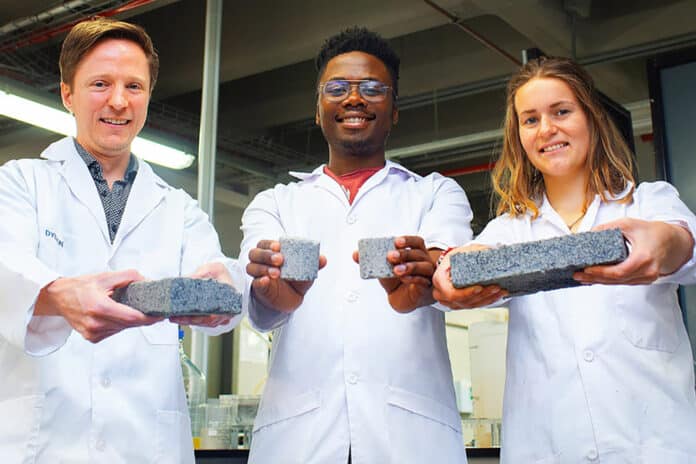Suzanne Lambert, a master’s student from the University of Cape Town (UCT) has developed the world’s first bio-brick grown from human urine. He has created bio-bricks using a natural process called microbial carbonate precipitation.
Lambert colonized loose sand with bacteria that produced urease. He then used an enzyme; the urease separates the urea in pee while delivering calcium carbonate through a complex chemical reaction. This concretes the sand into any shape, regardless of whether it’s a solid column or now a rectangular building brick.
For the past few months, Lambert and civil engineering honors student Vukheta Mukhari have been hard at work in the laboratory testing various bio-brick shapes and tensile strengths to produce an innovative building material. Mukhari is being co-supervised by Professor Hans Beushausen, also from the civil engineering department. Beushausen is helping to test the products.
The improvement is likewise uplifting news for the environment and a global warming as bio-bricks are made in molds at room temperature. Standard bricks are kiln-fired at temperatures around 1 400°C and create tremendous amounts of carbon dioxide.
Lambert’s supervisor, Dr. Dyllon Randall, said, “If a client wanted a brick stronger than a 40% limestone brick, you would allow the bacteria to make the solid stronger by ‘growing’ it for longer.”
“The longer you allow the little bacteria to make the cement, the stronger the product is going to be. We can optimize that process.”
Lambert’s brick uses real human urine for the first time, with significant consequences for waste recycling and upcycling. Her work builds on foundational research by Jules Henze, a Swiss student who spent four months working with Randall on this concept in 2017.
The bio-brick process produces as by-products nitrogen and potassium, which are important components of commercial fertilizers.
Chemically speaking, urine is liquid gold, according to Randall. It accounts for less than 1% of domestic wastewater (by volume) but contains 80% of nitrogen, 56% of phosphorus, and 63% of the potassium of this wastewater.
Some 97% of the phosphorus present in the urine can be converted into calcium phosphate, the key ingredient in fertilizers that underpin commercial farming worldwide. This is significant because the world’s natural phosphate reserves are running dry.
Randall explained, “The fertilizers are produced as part of the phased process used to produce the bio-bricks. First, urine is collected in novel fertilizer-producing urinals and used to make a solid fertilizer. The remaining liquid is then used in the biological process to grow the bio-brick.”
“But in that process, we’re only after two components: carbonate ions and calcium. What we do last is take the remaining liquid product from the bio-brick process and make a second fertilizer.”
“The overall scheme would effectively result in zero waste, with the urine completely converted into three useful products.”
“No one’s looked at it in terms of that entire cycle and the potential to recover multiple valuable products. The next question is how to do that in an optimized way so that profit can be created from urine.”
The paper is published in the Journal of Environmental Chemical Engineering.
